What a pleasure it is to return to Glen Villa, my garden in Quebec, after three weeks spent visiting gardens in Scotland and England. Seeing so many amazing places there, I was worried that my own garden would be a disappointment.
It wasn’t. It isn’t. Yes, I can see dozens of things, large and small, that need attention, but to return to a vegetable garden overflowing with produce and a landscape that never fails to delight makes me glad to be home.
The weather in the UK was exceptionally good. We had sunshine and warm temperatures most days, and the occasional rainfall only made the gardens glisten in the sunshine that invariably followed. During the same time, the weather in Quebec was surprisingly hot, and I’m glad that I missed temperatures that rose to 33 C (90 F) with humidity to match.
Only two days ago it felt like summer. Today is bright and sunny but the temperature has dropped. And although autumn doesn’t officially begin until tomorrow, the signs are everywhere to be seen: fading foliage …
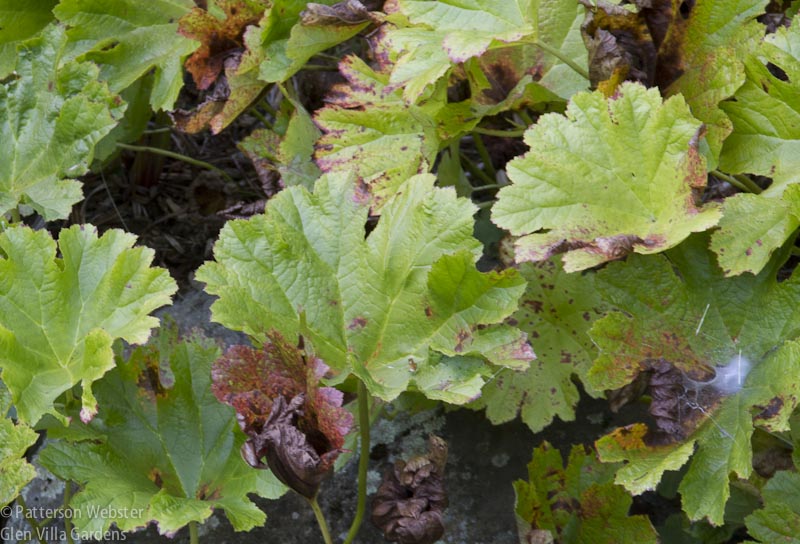
The leaves of Darmera peltata are looking frazzled. Is this because of the unusual heat or is it a sign of the changing season?
yellowing leaves …
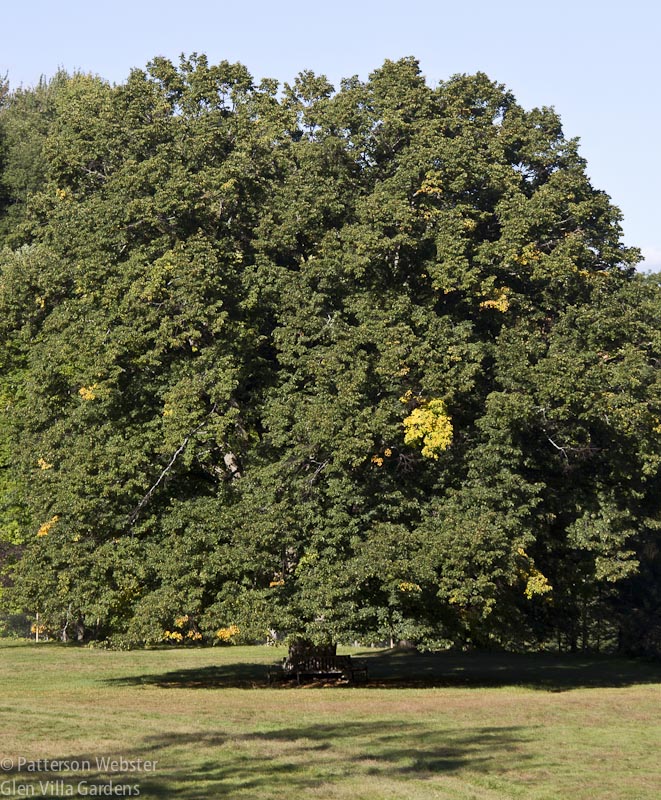
The linden tree has a patch of yellow that makes me think of a shock of hair coloured blue or green or purple. Definitely not coloured grey.
… and touches of colour that soon will be everywhere.
The ornamental grasses at Scampston Hall, a walled garden in Yorkshire designed by Piet Oudolf, were spectacular …

Molinia caerulea ssp caerulea ‘Poul Petersen is laid out in great swathes through closely mown grass in the section of the Walled Garden called — almost redundantly — Drifts of Grass. This garden was stunning during and after a light rain.
but the feather reed grass (Calamagrostis ‘Karl Foerster’ ) by the Skating Pond at Glen Villa holds it own in comparison.
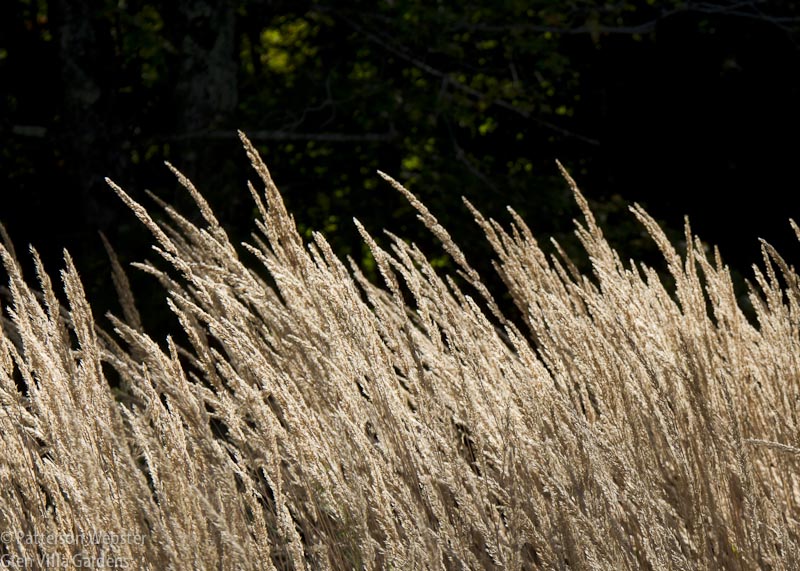
Calamagrostis ‘Karl Foerster’ shimmers in the late afternoon sunshne. Other ornamental grasses at Glen Villa are yet to come to their full autumn colour.
Visiting gardens in the UK often makes me envious. How lucky gardeners there are to be able to grow so many plants that won’t survive a Quebec winter. Envy is more than balanced, though, by the ideas generated from visiting special places.
Broadwoodside, a private garden near Edinburgh, was full of copy-worthy ideas. In a courtyard organized on a grid, a parrot cage sat in the central square, with a talkative bird who mostly refused to speak. The remaining grid was dotted with equally spaced maple trees; each tree bore a label identifying it — incorrectly. This light touch made me laugh. It points out an experience we all have shared — plants clearly misidentified, and bare spots of ground with labels announcing what might once have been there.

In the Upper Courtyard at Broadwoodside, maple trees are variously mislabelled as walnut, lime, willow and other types of trees.
Those mislabelled trees made me more determined than ever to use words in the landscape at Glen Villa. Some words appear now. On a path in the woods, I erected a tree trunk painted yellow to mark where the path splits.
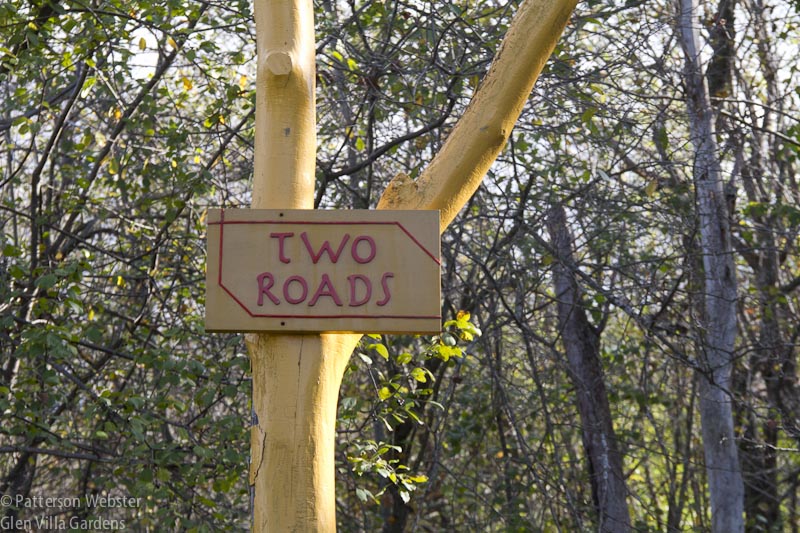
Two Roads diverge in a yellow wood. Whichever path you take leads to the same destination. Eventually, at least.
Over a stream that separates our property from a neighbour’s, I designed a Magritte-inspired bilingual message.
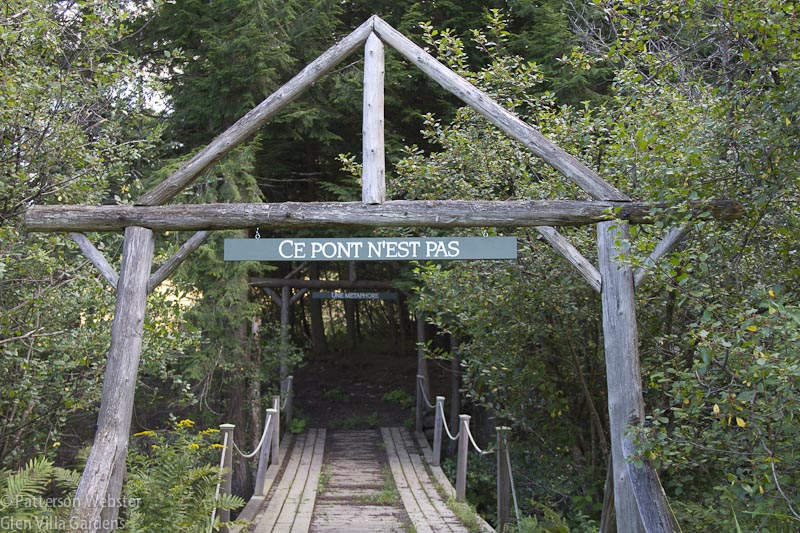
The sign in the foreground says ‘This bridge is not”. On the other side of the bridge a second sign ends the phrase, saying “a metaphor.” Crossing the bridge in the opposite direction, the words are in English. A metaphor for relationships between neighbours or for Quebec itself?
Tree Rings, a project that I hope to finish within the next month, will include three words. I hoped to complete this project months ago but choosing the right words took far more time and thought than I expected.
Even so, I plan to add words to other parts of the garden and in the woods and fields that surround Glen Villa. In part I do this because it gives me pleasure. I also do it because it allows me to question the way I look at and think about the land that surrounds me. Defining and labelling aspects of the garden suggest ways to think about it. And I hope they will affect in a similar way the increasing number of people who visit.
In the use of words I’m inspired by Little Sparta, the extraordinary garden of the poet and garden maker Ian Hamilton Finlay. Many of the words used there speak of time and its passage. Others add touches of humour. All, I believe, add and reinforce meanings that go miles beyond ordinary garden talk.
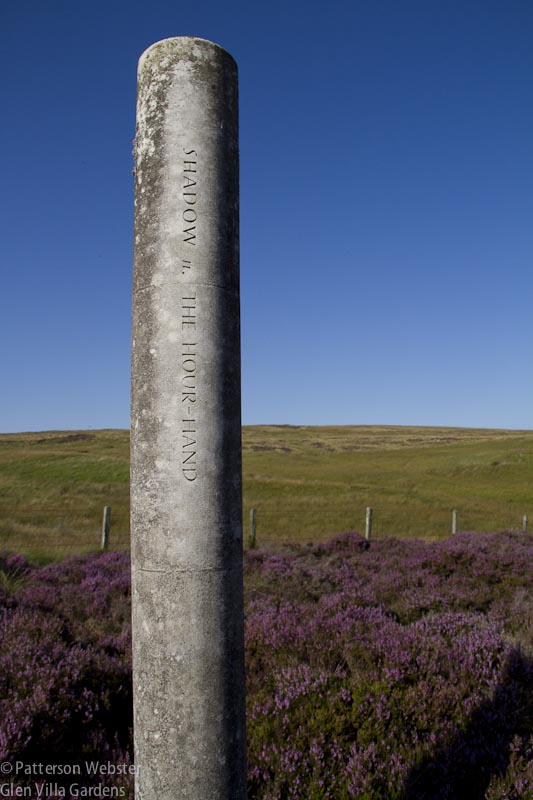
On a bright sunny day, the message sent by this column was abundantly clear: SHADOW n. the Hour-Hand. The column is in a field full of heather. Quite glorious at this time of year.
It’s this broader, more profound use of words that I hope will enrich the experience at Glen Villa. While I’m searching, though, I am simply glad to be home, admiring the view and soaking up the sun.
Do you use words in your garden? If so, I hope you will share them with me.


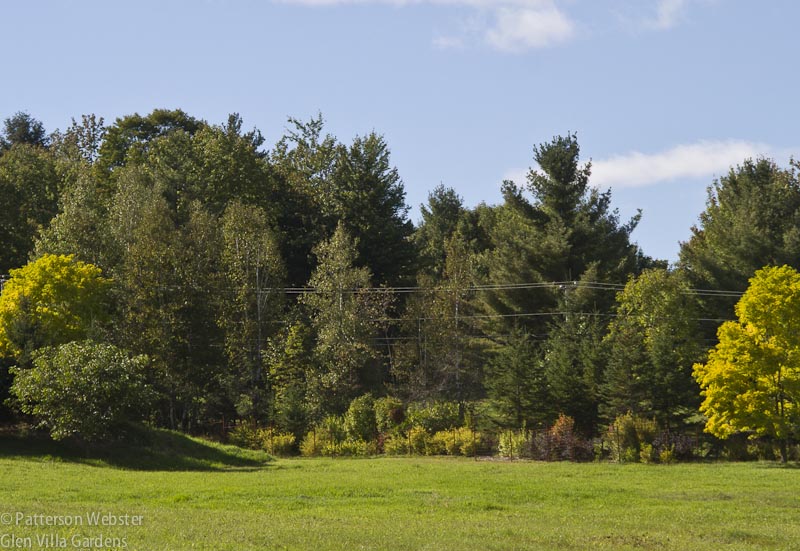
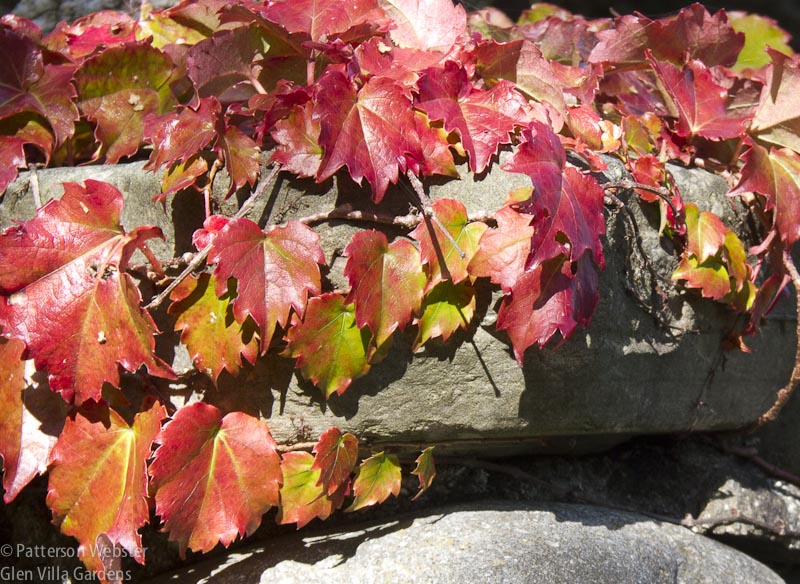




Your Virginia creeper looks very different than mine. Is it Parthenocissus quinquefolia? Mine has a palmate compound leaf, and yours doesn’t appear to. I have thought of putting signs in the wild garden to direct strollers to points of interest, but not as symbolic or thought-provoking aspects of the garden. (Unless the thought of a hammock up ahead is thought provoking!). But I have wanted to include humor in my garden somehow, and perhaps words will be one way to do that.
We have Parthenocissus quinquefolia in some parts of the garden that also has a palmate leaf as you describe. I didn’t plant it or the one I photographed so will have to check it out on the weekend.
As for words — a hammock alert sign sounds like a great idea.
The fall colors don’t seem to be in a rush!
The colours will have to wait, Robert — it was 26C today!
I’m afraid I don’t use words, but the idea is intriguing. I like the “Two Roads” sign. How about, instead of labeling plants, using a label with multiple choices, like a test?
Interesting idea, Jason! i wonder how many people would pass the test.